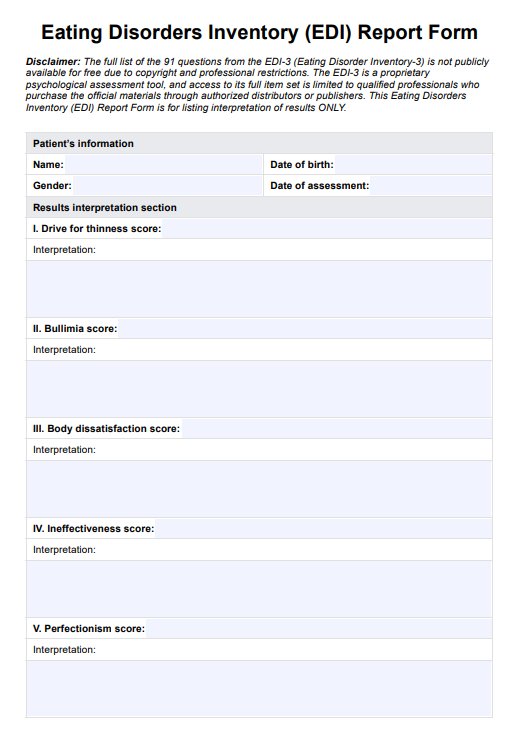The Eating Disorders Inventory (EDI) is primarily used by healthcare professionals such as psychologists, psychiatrists, and dietitians specializing in diagnosing and treating eating disorders. It is also used by researchers studying eating disorders.

Eating Disorders Inventory
Discover the Eating Disorders Inventory, an essential tool for diagnosing and managing eating disorders used by healthcare experts.
Eating Disorders Inventory Template
Commonly asked questions
The EDI is typically used during the assessment phase of eating disorder treatment. It helps clinicians understand the severity of a patient's condition, monitor changes over time, and evaluate the effectiveness of treatment strategies. It may also be used in research studies to gather data about eating disorders in a specific population.
The EDI is a self-report questionnaire that patients complete. It includes several subscales that assess different psychological traits associated with eating disorders, such as body dissatisfaction, drive for thinness, and perfectionism. Healthcare providers then score the responses and interpret the results to gain insight into the patient's condition.
EHR and practice management software
Get started for free
*No credit card required
Free
$0/usd
Unlimited clients
Telehealth
1GB of storage
Client portal text
Automated billing and online payments











